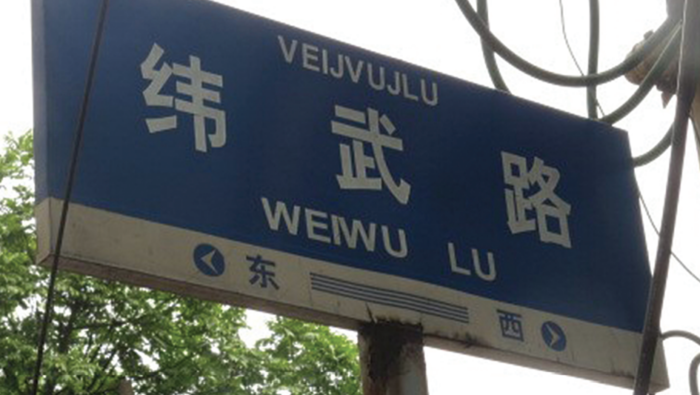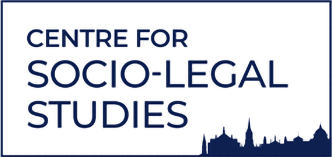
Using A Lived Linguistic Landscape Approach for Socio-Legal Insight

Many Socio-Legal scholars are familiar with Bourdieu’s influential exposition of the symbolic power of language. Yet, it is relatively rare to foreground language in investigations of the social co-construction of laws, peoples, and places. This post muses on the possible gains of applying ‘Linguistic Landscape approaches’ that have originated outside Law.
The linguistic rather than geographic features of landscapes include, ads, public plaques, shopfronts, audio announcements and road signs such as the one included in this post.
A basic analysis covers the relative presence of certain languages, whether they’re used for informational or symbolic functions, format, and material characteristics, e.g. relative size, prestige of location, or durability providing a ‘relatively longer social life’, as Jackie Jia Lou (2016, p. 4) puts it. Data collection is fairly simple and suitable even for groups, e.g. undergraduate classes or citizen science projects. All societies are somewhat multilingual. Their linguistic landscapes reproduce or resist the linguistic and social hierarchies that organise a society. Linguistic Landscape data is analysed to examine how power relations are structured and spatialized, including what environments communicate about which languages (and the people they index) are ‘in place’. This is why Elana Shohamy’s influential typology of language policy mechanisms includes language in the public space; it sets norms.
Where laws explicitly control language practices, perhaps controlling ethnic groups by proxy, linguistic landscape data documents some of that control. In China, there is a constitutional freedom to use minority languages, national laws about public language practices, and regional laws about bilingual signage, inter alia. My study centred on one minority language, Zhuang, associated with China’s most populous minority group, the Zhuangzu. This Socio-Legal study culminated in my 2021 book Language Rights in a Changing China.
I extended the method into a Lived Linguistic Landscape approach, aligning with the ethnographic turn in Language Policy scholarship. The heart of my approach was to triangulate between layers of landscape data with an examination of who is legally empowered by China’s constitutional minority language freedom and the structural fragmentation of relevant government authorities.
This included first documenting the languages on display in selected areas. I chose public urban and cultural spaces in Guangxi Zhuangzu Autonomous Region (GZAR) in south-central China, as well as the campuses of three universities teaching Zhuang language (see further Grey 2021: 143-144). Zhuang language is rare in these landscapes overall, but its standardized, alphabetic form is displayed in patterned and largely government-authored ways. (See pp141-186 and 277-287 of my book or the abridged Chinese translation.)
I then documented non-linguistic symbols of Zhuang people and culture on display in these same places e.g. a minorities-focused museum shaped like a traditional Zhuang drum (see my Ch 7). This applies the related concept of a ‘semiotic landscape’, which broadens beyond linguistic features. These landscapes did not represent people speaking Zhuang language, contributing to displacing or de-valuing Zhuang language as a continuing cultural practice.
The third layer comprised data on peoples’ interactions with and perceptions of the displayed texts, collected through walking interviews and ethnographic observations. Campbell recently extolled ‘walking interviews’ on this blog; I likewise chose them to foreground embodied and emplaced knowledge and the dialectical meaning of linguistic landscapes, inspired by three Human Geographers’ attention to lived spaces in a study of conflicts over languages in Guangzhou, and the ‘mobile narrations of place’ in a semiotic landscape study. This afforded interesting findings about the social meanings made of the small amount of Zhuang on display (see my Ch 8). For example, it was seen by some as insultingly incorrect rather than valorising.
This layer also revealed the (subjective) invisibility of Zhuang language, even for Zhuang speakers, even when it is actually on some signage. From my other data analyses, I could explain why people may be habituated to not expect Zhuang in these landscapes, or in written form at all. The fact that Zhuang is not seen by some Zhuang speakers challenges assumptions about valorisation and inclusion that governments seem to make when choosing to display minority languages, because they assume the symbolism of its display will be positively received by speakers (see further, my Linguistic Landscape article.)
The final layer of lived linguistic landscape analysis centred on the central, regional and municipal laws doing the linguascaping. These laws govern the formatting, authorship, and language choices of texts in these landscapes. Analysis revealed partial compliance; it seems that linguascaping laws were reinterpreted and resisted by heterogenous agents, similar to the way government-authored representations of Zhuang language, culture, and people in the landscape were being reinterpreted and resisted, as the third layer revealed.
These layers allowed me to explain how linguistic landscapes spatialize the jurisdictions and minority identities created by China’s laws about minority languages and minority peoples, but also to show how linguistic landscapes potentially challenge laws about language. Taking this approach, I could make informed predictions as to why a new law, 2018’s GZAR Minority Language Work Regulations, may struggle to promote Zhuang language despite having that ambition.

